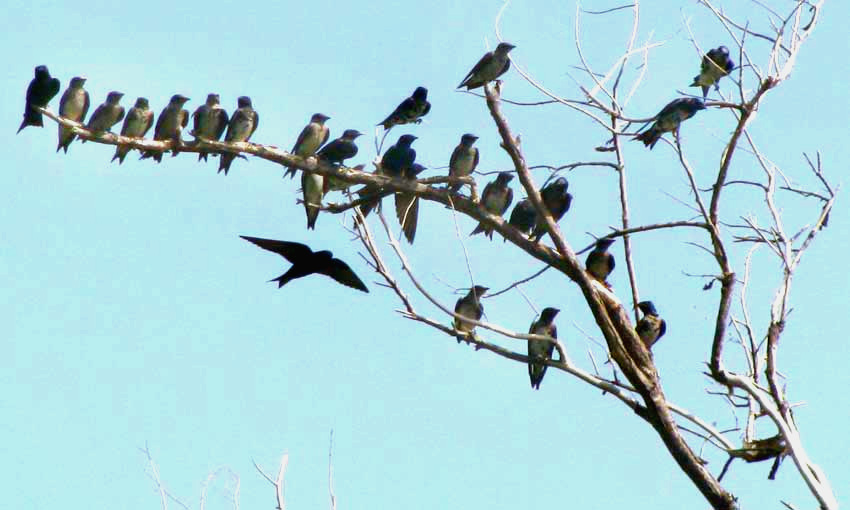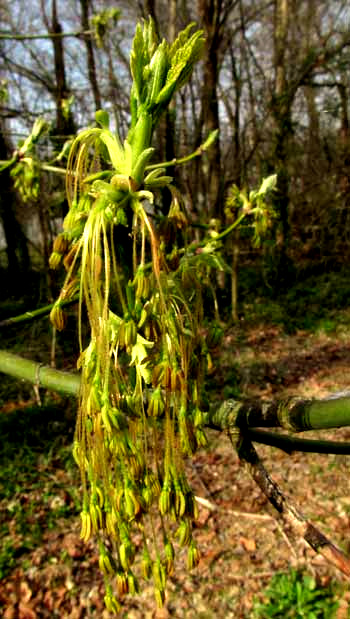 Keeping phenological records, such as when the Purple Martins, Progne subis, at the right begin their fall migration, is not only fun, but of growing importance to everyone on Earth. (How will global warming affect all Life on Earth?). Moreover, keeping those records is something we backyard naturalists can can do!
Keeping phenological records, such as when the Purple Martins, Progne subis, at the right begin their fall migration, is not only fun, but of growing importance to everyone on Earth. (How will global warming affect all Life on Earth?). Moreover, keeping those records is something we backyard naturalists can can do!
Phenology is the science dealing with relationships between climate and periodic biological phenomena.
For example, phenology is studying and noting...
 Boxelder tree, Acer negundo, with stamens fully developed on leafless stems, April 7, 2017, in Calhoun, Kentucky, USA. This is good phenological information. Will Boxelder flowering reach this stage earlier as the Earth warms?
Boxelder tree, Acer negundo, with stamens fully developed on leafless stems, April 7, 2017, in Calhoun, Kentucky, USA. This is good phenological information. Will Boxelder flowering reach this stage earlier as the Earth warms?- when birds begin building their nests
- when trees issue their leaves
- when wildflowers blossom
- when the first Monarch Butterfly appears
- when Morel mushrooms appear in the forest
- when squirrels produce their year's first young
- when tadpoles appear in ponds
You see, everything is a when and everything is something that repeats itself at a certain time during the year's annual cycle. Probably you could list a hundred or more such occurrences right off the top of your head.
Phenological records are especially important nowadays because it's clear that the Earth is warming up. Phenological records reveal how species are dealing with the changes. In a way, records help us predict the future.
K-12 students can share their own field observations with classmates across North America at the Journey North website. Migration patterns of monarch butterflies, robins, hummingbirds, whooping cranes, gray whales, bald eagles, other birds and mammals, the budding of plants, changing sunlight and much more is taken note of. The site offers migration maps, pictures, standards-based lesson plans, activities and information to help students make local observations and fit them into a global context.
If you'd like to participate in real research, take a look at the USA National Phenology Network website. In Europe, there's the European Phenology Campaign. Also, note the online Phenology Visualization Tool.
Do you remember the record-breaking heat wave in parts of the Western US and Canada in late July, 2021? At that time the all-time Canadian record of 121.3°F degrees (49.6°C) was registered in the village of Lytton. Shortly after setting that record, Lytton was almost totally destroyed by a wildfire. Leading scientists said that such heat would have been "virtually impossible" without the influence of climate change.
After things cooled down, Christopher Harley, a marine biologist at the University of British Columbia, calculated that more than a billion marine animals may have been killed by the heat. That was reported in the July 8 issue of The Guardian.
Science needs accurate phenological records from all over the world. Maybe when there's enough evidence, people will actually start changing their lives, to try to stop or at least slow down what seems to be coming.